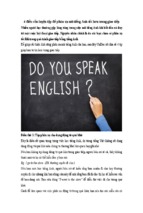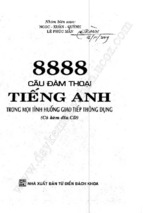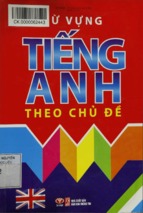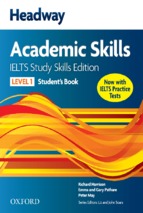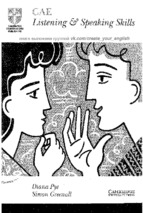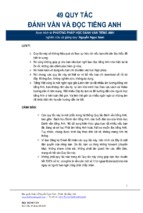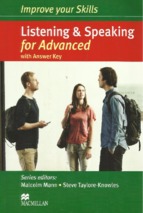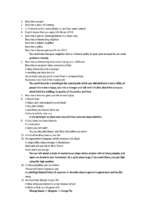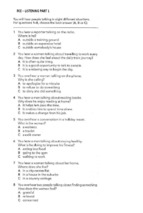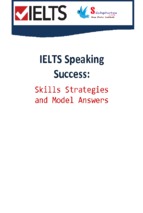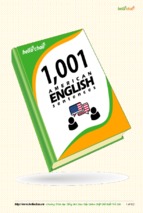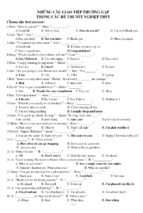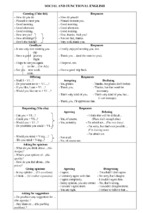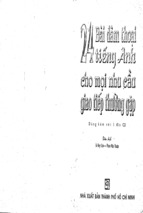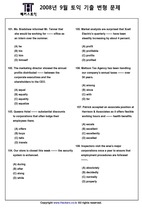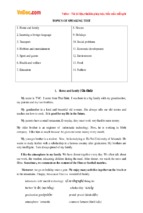Tai lieu ngu am hay nhat
l|t
.\cknowledgements
lv
SectionB
-ntroduction for students
hroduction for teachers vii
Consonants
23 P (Pen)
79
)iagnostic Tests
24 b (baby)
25 t (table)
85
ix
:ection A
\brvels
I
I i: (sheep)
3
2 r (ship)
'7
3 e (pen)
11
{ a (man)
15
5 .r (cup)
19
81
89
26 d (door)
27 k (key)
93
28 s (girl)
29 Review
30 s (sun)
101
3I z (zoo)
32 J (shoe)
110
tt7
97
105
t07
l14
6 q: (heart)
23
i Review
27
33 S (television)
34 tJ (chip)
8 o (clock)
29
35 dS (Ianuary)
t24
9 cr (ball)
33
L28
i0 u (book)
36
36 Review
37 f (fan)
l1 ur (boot)
39
135
12 g: (girl)
43
38 v (van)
39 w (window)
4o j (Yellow)
4l h (hat)
r43
a2 0 (thin)
43 6 (the feather)
15I
44 Review
45 m (mouth)
159
165
13 e (a camera)
48
14 Review
52
15 er (male)
54
16 ar (fine)
57
17 cr (boy)
60
18 au (house)
63
19 au (phone)
66
20 ra (year)
t20
l3l
139
t47
155
r62
70
46 n (nose
47 4 (ring)
2L ee (chair)
73
48 I (letter); (bdl)
L72
22 Review
76
49 r {rain)
50 Review
176
Overview
183
Mask
185
Key
186
168
180
tv
In the preparation of this new edition I would like to thank:
SallyMellersh (formerly of Hammersmith and WestLondon College)for updating and
expandingthe lisr of likely errorsto accompanythe new editions of Ship or Sheep?
and
Tleeor Three?byits inclusion on the website
(http:/ /www.cambridge.org/elt/elt
projectpage.asp?id=2500905).
David McCreathfor IT assistance
and contribution to my computer literacy.Sandra
Turner for help with typing.
My editors N6irin Burke,Frances
Amrani and YvonneHarmer, aswell as the following
teachersfrom all over the world who commented during developmentand gaveme
such practical advice:
Michele Chartrand-Hirsch,France;Ian Chitry UK; David Deterding,Singapore;
Sylvie
Donna, UK; ElizabethDowney,NewZealand;Lynda Edwards,UK; Laura Hancock,UK;
David Hill, Australia;Kip Kelland,Italy; Kathy Keohane,UK;Andrea Paul,Australia;
Gordon FrancisRobinson,Singapore;
Iulietta Ann Schoenmann,UK; RogerScott,UK
PeterHobbs and other teachersof International HouseSydney,
who allowedme to
observeand co-teachtheir classes;
ShdnIones,for classobservationat Blacktor,rrn
TAFECollege.
I would like to continue to thankAmir Pirouzan,Iean Crockerand Iohn Lipscomb for
their adviceand encouragementduring the preparation of the original edition of Ship
or Sheep?
Nso Philippa Lipscomb and other teachersof the British Council, Teheran,
who helped with the first classtry-outs.
The publisherhasusedits best endeavours ensurethat the URLsfor external
to
websitesreferredto in this book are correct and activeat the time of going to press.
However,the publisher has no responsibilityfor the websitesand can make no
guaranteethat a site will remain live or that the content is or will remain appropriate.
Illustrations by: JohannaBoccardo,Pat Murray,Felicity House and TonyWilkins
Coverdesignby PentacorBook Design
Designed
and typesetby Hart Mcleod
o
a
Seven the 50 units in this book are reviewunits. Eachof the other
of
of
units introducesa differentEnglishsound,aswell as other aspects
pronunciation(e.g.
stress,
intonation)which are alsoimportant for
successful
communicationin English.
Youcan usethis book eitherworking aloneor with a class+ teacher.
Youwill need:
- equipmentto listen to the CD, and equipmentto recordyour voice
- a small mirror to compareyour lip positionswith the pictures
Youwill useit at the beginningof
-Your mask (cut it out from page185).
most units (but not Unit l). Youcan alsouseit for extrapracticeof
soundsthat are difficult for you.
First,find out which units are most important for you. To do this:
- If possible,
checkyour mother tonguein the Lisrof likely errors(see
website:http://r,r"wwcambridge.org/elt/elt_projectpage.asp?id=2500905)
and makea printout of that part of the list.
Tests(seepagesix-xi). If you are
- Do at leastone of the Diagnostic
native
working alone,do TestA. TestB needsthe help of a teacher,
speaker. you areworkingwith a teacher,
If
speaker near-native
or
he/shewill decidewhetheryou do the tests.
Decidewhetheryou want to:
- work first on the most important units for you, or
- beginat the beginningand work through the book, spendingmore
time on the most important units for you.Youcan chooseto work
You
on
A
and SectionB (consonants).
simultaneously Section (vowels)
can also do the sevenreview units.
Maktng Englishsoundsbeforebeginningeachsection(seepages
Read,
I-2, 79-80).This introduces some essentialvocabulary.
Symbols
usedin the book:
meansthis materialis recorded.
meansthe answersare in the Key (seepages186-224).
If
is
meansthis exercise suitablefor a group or pair of students. you are
a studentworking alone,you could try it by usingyour imagination,e.g.
by imagininganotherstudent.
pagevi).
means'use mask'(see
the
means'visit the websiteto practise'.
Othersymbolsused:
Intonation is shown with arrows:
is
in
The main word stress shovrrn bold, e.g.pronunciation,student.
is
stress shourn
stress shownwith underlining,e.g.Sentence
is
Sentence
with underlining, or sometimeswith big and small circles:
(Sentence
is
with
stress shorvrm underli4ing).
OoOoOoooOo
vl
' Phonetic symbols used in this book are the International Phonetic
Alphabet (IPA) (the contenrs page shows all the symbols used). you can
use this book without knowing these symbols, but it is useful to learn
them so that you can check the pronunciation of new words in a
dictionary. The Cambridge Aduanced Learner's Dictionary uses these
symbols.
. In most units (but not in Unit l), Exercise2 Minimal palrs gives you
practice in contrasting two sounds in words and sentences.If you don't
have one of the two sounds in your language, practising the pairs of
sounds can sometimes help you to hear - and then produce - the
English sound.
Dialogues are recorded.You can backtrack on the CD to repeat them as
'
many times as you want. If you don't like backtracking, listen to the
dialogue after you have done the dialogue tasks.
TheMask
There are two ways in which you can use the mask (which you cut out from
page I85):
I At the beginning of the minimal pair exerclsesHere, you are instructed
to use the mask in most units after Unit l. The mask symbol
at the
beginning of the exerciseindicates 'use the mask'.you can start the
minimal pair practice with the mask covering the written words, just
Iooking at the pictures and listening to the pair sounds (first in words
and then in sentences).This will help you to focus on really listening to
the sounds first. After you have listened for the first time, you can
backtrack on the CD to listen again and repeat.
2 Extra practice of dfficult sounds You can also use the mask, for example
at the end of a unit, to enjoy extra practice of sounds that are difficult for
you. Here, your task with the mask is to try to produce the contrasting
sounds correctly while trying to remember the words and sentences.
(e.g. I Mask on - listen and repeat. 2 Mask off - read aloud. 3 Mask on _
remember and say aloud. 4 Mask off- read aloud to check.)
Otherwaysof having
extrapractice difficult
of
sounds
I Make playrng cards by photocopying rhe minimal pair charts (e.g.four
copies) and cutting out the pairs. you can then play some of the card
games described in the review units. If working alone, play pick up pairs,
Unit 7, page 27 or Pick up same sounds, Unit 14, page 52.
2 Check on the website
(http: / i www.cambridge.org/ elt/ elt_projectpage.asp?id=2500905)
to see if there is any extra practice material for this sound.
vil
o
t
Please
readthe Introduction for Students pages
v-vi.
on
Level This book is written for intermediatestudents, previous
but
editionshavealsobeen usedbystudentsat otherlevels.Tree
orThree?is
written for beginner-elementarylevel.
Class/Studentworking alone The instructions are written for a student
working alone,but can be usedfor classroom
teachingaswell. Seethe
symbolsin the students'introduction,especially t
DiagnosticTests Youcan usetheseif you needto assess
students'
difftculties. ifyou already
But
know this for your class,
you can chooseto
skip the testsand decidewhetheryou want the studentsto work
through the book or focusonly on someunits.
Studentsworking alone can self-administerTestA with or without your
input. To administerTestB, studentscan be askedto recordtheir
individualperformances your assessment. you may preferto do
for
Or
this with them so that you can immediatelycheckpossible'reading'
ratherthan pronouncingmistakes, askingthem to listen and repeat
by
the item.
List of likely errors This is on the websiteso that it can be addedto. It
can be found at
http :/ /www.cambridge.org elt_projectpage.asp?id=2500905.
/ elt/
It would be useful for each student to have a printout of the relevant
part of this list.
Minimal pairs In this book,thesearepairs of words/sentences
which
differ by only one sound,e.g.BilI boughta sheep.lBill
boughta ship.
Thesesometimes
help studentsto hear- and then pronounce- sounds
that are difficult for them. You may want to extend students'class
practice of particular minimal pairs by inventing gamesor playing the
following:
- Cardgames Theseare describedin Exerciset of the review units.
Makemore copiesif usingpairsfrom only one unit. This book is
copl'right,but permissionis grantedto makea singlecopy of the
cardsdescribedin the review units, for the sole purpose of playing the
card gamesoutlined.
- 'Fingers'For each pair, saywords rapidly at random, e.g.sheep
sheep
sheep
ship ship sheep
shrp.Studentsshow with one or two fingers if
they hear sound I or sound 2. Students
practisein pairs and then back
to back.
vllt
- 'Mingling' Eachstudent has one of the minimal pair cards.Students
mingle (move around randomly), not showingtheir cardsbut
repeatingtheir word to find the otherswith the samesound.They
form a group,which checkscorrect membership.The first group to
completetheir set of wordswith the samesoundwins. Students
swap
cardswithin their group and checkpronunciationof new words
beforeall mingling again to find the person in the other group with
the other half of their minimal pair. Studentschangecardswith that
personand checkeachother'spronunciation.
Then start the mingling
gamefrom the beginningso both soundsareused.
The mask (SeeIntroduction for Students.)
The purpose of the mask is
twofold:
- to allow studentsto listen to and practisethe minimal pair sounds
first in words and then in sentences
without beingdistracted the
by
written word
- for extra practice of soundsthey find difficult.
tx
DTAGNOSTIC
TESTS
All students should do Test A.
Test B requires the help of a teacher, native speaker or near-native speaker
of English.
The tests are not to give you a mark. They may help you to find out which
sounds and other aspects of English pronunciation could be the most
difficult for you. You should also check this in the ll'sf of likely errors or'the
website:http://ww\M.cambridge.org/elt/elt_projectpage.asp?id=2500905.
TEST
A
Section Sound
I
discrimination
az Do not stop the recording or repeat. In each item you will hear two words.
Sometimes the two words are the same. Sometimes they have one sound
that is different. Listen once only to each item and tick the S (same) column
or the D (different) column. If you are not sure, tick the question mark (?)
column.
S
D
2
S
D
?
EXAMPLE If you hear, 'sheep sheep' tick the S column.
If you hear, 'sheep ship' tick the D column.
If you are not sure, tick the ? column.
S
D
2
S
D
?
S
D
?
la
6a
12a
17a
1b
6b
r2b
17b
2a
7a
l3a
l 8a
2b
7b
13b
18b
2c
7c
I4a
l 9a
3a
8a
r4b
19b
3b
Bb
l4c
20a
4a
9a
r4d
2Ia
4b
9b
l5a
22a
5a
10a
15b
22b
5b
r0b
16a
23a
5c
lla
16b
23b
r1b
l6c
24a
x
2
Section lntonation
es Do not stop the recording or repeat. Listen to Lucy talking to Lesley on the
telephone. In some items her voice goes up (
) at the end. In some
. ). Tick the
' or
items her voice goes down (
column for each
item. If you are not sure, tick the ? column. Listen to the example first.
i#t ita
EXAMPLE a) That'sLesley,
b) That'sLesley,
isn't it?
2
I
?
6
2
3
8
4
9
5
l0
3
Section Wordstress
e+ Do not stop the recordingor repeat.In eachitem, tick the one word that is
different from the others.
EXAMPLE items column
I
2
3
4
5
number
alone/ listen
nowhere birthday mistake toilet postcard
guitar eighteen today machine English
away brother breaKast frightened valley
comfortable vegetables photograph lemonade minimal
telephoning supermarket conversation exercises helicopter
xi
IESTB
(Note: This test requires the help of a teachel native speaker,or nearnative speaker of English.)
Ask the student to read each test item, and record the grading on the result
sheet (page xii).
A student's performance can be recorded, or the student can be asked to
repeat an item as many times as necessaryto record a result, The reasons
for mispronunciation are many, and some may be caused by reading
difficulty. To check this, say the mispronounced word correctly and ask the
student to repeat it. If the student can then say it correctly, add the symbol
R to your grading on that item, indicating that tfie student can pronounce
this sound but may have difficulty when reading it.
Suggestedsyrnbols for grading: / no difficultywith this sound
X difficulty with this sound
R may have difficulty reading this sound
i
Sh o p p inlgs t
1
2
3
4
5
6
7
8
9
10
1l
12
13
14
15
16
17
18
19
20
21
22
23
24
some cheese (cheap cheese);some tea (Chinese tea)
titty biscuits; four fish
ten eggs (big eggs)
jam; apples and oranges; a cabbage
ten tomatoes (large tomatoes)
five kilos ofveal (verygoodveal)
some strong string (long string)
four forks (small forks); spoons; cups; small paper plates
some good sugar; milk; coffee; a cake
pick up Iude's blue shoes at the shoe shop; two kilos of brown rice; a
grapefruit
nuts; honey; half a dozen hot buns
one lemon; nine brolrm onions; flowers for the house
some paper for my mother's letters; collect Grandfather's leather jacket
from the cleaner's
a girl's shirt and skirt (size thirteen); cold drinks (don't get dry ginger);
some good bread
eight small cakes and paper plates; some sausagesfor supper
some yellow roses for your sister
white wine (sweet wine); some lce
beer for Bob (buy it from the pub near here)
some shampoo for Claire'shair; some pears
some tins of New Zealand peas, or frozen beans
fresh English fish from the fish shop
atoy for the little boy (a blue or yellow ball)
something for Mr Smith (it's his birthday on Thursday)
a small cheap television for the garage
RESULTS
SHEET FINDINCS List likelyerrors
AND
from
of
In any of the three columns, place a cross against the sound where there may be difficulty.
(Diagnostic
Test B)
SOUNDS
/t"[i (ctri
r20
3 /e/ (pen)
t31
11
4 le,l(man)
Findings from
List
101
15
124
5 /qr/ (heart)
/t/ (table)
6 /v/ (van)
7 /o/ (clock)
8 /crl (ball)
13s
168
174
8I
9 /u/ (book)
97
l0 /ur/ (boot)
/r/ (rain)
1l /,ri (cup)
/h/ (hat)
12 /n/ (nose)
176
t9
147
165
/aui (house)
13 /e/ (camera)
/d/ (the feather)
14 lstl (girl)
/d/ (door)
155
l4a, l4b, I4c
L5 letl(male)
/s/ (sun)
107
16 laul( ph o n e )
17 larl (ftne)
/w/ (window)
l8 /re/ (year)
143
57
139
19 leal( c h a i r)
/m/ (mouth)
20 lzl (zoo)
162
2r /f/ (shoe)
114
/l/ (letter)
110
172
23 /0/ (thin)
151
24 ftl(television) Il7
A
Section
Vowels
Making
English
sounds
short vowels
(makea short sound)
A/ (ship)
/e/ (pen)
/u/ (book)
/a/ (man)
Usevour voice to make all vowels.
h/ (cup)
/o/ (clock)
/a/ (camera)
longvowels
(make a long sound)
/c:/ (ball)
/u:/ (boot)
/irl (sheep)
/c:/ (heart)
/s/ (girl)
diphthongs
(two vowel sounds)
/eu/ (phone)
/rel (year)
lctl(boy)
/aul (house)
/e/ (male)
/arl (fine)
/eel (chair)
$ rur,ur
Spot the different sound.
EXAMPLE lal lel lul leal ltl
Answer: The fourth sound is a diphthong.All the others are
short vowels.
2 lcrl lel lrcl latl laul 3 lol li'.|lczl lszllgzl
Match thesewords with the picturesbelow.
a the back of the tongue
b the lips
c the tip of the to ngue
d the front of the tongue
I leullul lrl lal ltl
Match the pictures (1-9) in A with the instructions (a-i) in B.
A
€
I
t_- t-,I ,C
B
a)
b)
c)
d)
e)
f)
Open your mouth.
Closeyour mouth.
Put your tongue forward.
Open your mouth a little. Then open mouth a little more.
Put your tongue back.
Put your tongue down.
I Put your tongue up.
he,
h) Put your tongue forward and up. Practiselill: eat,easy, she,we.
i) Fut your tongue down and back. Practise/ol/: ask,are, arm, car.
lul sheep
- Do vou like your tea sweet?
please.
- l-es.
Threesugars,
c
Target
sound/irl
\5
Open your mouth very little to make
the target sound ir. /irl is a long sound.
Listen and repeat: /irl.
"€
/irl
2 Sound
,6
rr.-\d
,"'' t':'
.1--t
sheep leak
Look forthatsheep. Stopit leaking!
out
&,
cheeks Peel
Whatlovelycheeks!
bean
6l
Irf,
Thispeel's vitamin in it.
got
C
leave
Throw thatbean. He'sgoingto leave.
out
&
ffi
fl
\t'
,s
w.'
&
Sound words
/i:/
eo a Listen and repeat the words.
Sound/irl sentences
ez b Listen to the sentences.
'r;
c Sentence stress
Notice that the most important words for the meaning of a sentence are
pronounced more LOUDIy and s I o w Iy .
The less important words are said more quietly and quidd5l
Listen to the sentencesagain and this time look at the underlined
syllables below. Notice that they are louder and slower.
Look out for that sheep.
\Mhat lovely cheeks!
Throw out that bean.
Stop it leakingl
This pcel's got vitamin C in it.
He's going to leave.
nz d Listen again and repeat the sentences.
/D UNIT| /irl sheep
5 Dialogue
fl a First practisethe sound/ill in someof the words from this unit. Readthe
\,/
wordsaloud or visit the websiteto nractise.
One-syllable words: cheese beef tea eat meal
three cheap please me
Two-syllable words: Peter people Edam evening
Eastfield biscuit cheesecake
(The stressis always on the first syllable.)
Two-syllable words:
Janine
repeat
(The stressis always on the second syllable.)
Note on word stress:bold is used here to show you which part of the
word is strongly stressed,i.e. which syllable is pronounced more
LOUDIy and s I o w ly than the other(s). Word stress doesnt usually
change, except in some longer words with stress near the end. (See4c
and 4d.)
es b Listen to the dialogue, paying attention to the target sound. Then read
the dialogue and fill the gaps (1-10) with the correct words from the box.
cheese Peter eat please tea
three me teas beef
beef
In a caf6:'lt's cheaper eat at Marguerite's'
to
CHRISTINA:
Whatwouldyou lrke eat,t_
to
the cheapest.
? The cheese
sandwiches
are
P ET E R : r. . mmm... o h , a 2 _ s andw i ch,
E
pl ease, hri sti na.
C
CHR IST IN C h e e s e mmm J a n i ne? oul d
A:
...
W
vou l i kea I
cheese
sandwich?
or
sandw i ch a
JANINE: cheese
A
sandwich,
+_
Whataboutyou,Christina?
PETER:
Wouldyou likecheese s_
or
WAITRESS: you all readyto order?
Are
Whatwould you liketo e_
?
?
CHRISTINA: we'll haveone beefsandwich, cheese
Er,
two
sandwiches mmm,
and,
7
for me.
JANINE: for 8_
Tea
too, please.
PETER: makethatthreegYes,
, please.
(wr(ing down the order) One beef sandwich, cheesesandwiches
wAlTRESS:
two
and l0
teas.
ee c Listento the dialogueagainto checkyour answers.
Practise
readingthe
dialoguealoud,and recordyour voiceto compareyour productionof
the targetsoundwith the recording.
UNIT1 /irl sheep 5,
4 Intonation questions 'or'
of
with
Intonation is the voice going up or dor,vn.
This movement up or dor,rmbegins on the most important word in a
phrase or sentence.
In questions with'or' the intonation usually goes dor,rrn the end.
at
rs a Listen and repeat.
Would you like veal or bcgfi
Would you like coffee or tea?
Would you like coffee, tea or milk?
a
t
b Role
play
Use the menu to practise a conversation in a group of four or five. You
are in a restaurant. Take turns to be the waiter. Ask each other questions,
e.g. Would you like ... or ...?Then one person gives the order to the
waiter, who repeats the order to check it. If possible, also practise using
other menus. If it is an expensive restaurant, the waiter or waitress can
be more formal, sa],'lng Good euening before asking for the order.
EAST F IEL I] REST AIJRAN T
MENU
Soup
leek Soup onP€zl souP
Meat
veal on beef
Vegetables
beans oRpeas
Sweets
cheesecake on ice cream 0Rpeaches
Drinks
coffee r-rn
tea
Biscuits and Cheese
Edam cheese onBrie
[unr
| /i:/ sheep
endingin 'ese'
ero c Word stress nationalities
about thesenationalities,draw a line
As you listen to the sentences
connecting the country and nationality in the two lists below
Nationalities (Note the stresson the last syllable.)
Countries
Iapan
Nepal
Nepalese
Vietnam
Portuguese
Lebanese
rrr d Movingstress
The stressof these'ese'nationalities changesif the next word is strongly
stressed. we say,This bcefislapanesebut, It'slqanese bqf.
So
Listen and respond,like the example.
EXAMPLE Is this bread from Beirut?
it's
It's
bread.
Response:Yes, Lebanese. Lebanese
5 Spelling
Look back over this unit at words with the target sound, and write what
you noticed about how to spell the sound /i:/.
T
// ship
- \!hat about this fish? Can I eat it?
-Yes. Eat it.
- What about this cheese? Can I eat it?
- No, don't eat it. It's six weeks out of date.
Target
sound/r/
Arzaa First practise the sound /ill
(seepage 3). Listen and repeat.
lrzub Open your mouth a little more to
make the target sound /r/.
Listen and repeat.
Al2c Listenand repeatboth soundstogether.
c
/irl is long. /r/ is short.
i(\
l:
pairs
Mi n im al
$x
$
\t*
SoundI
Sound2
li'^l ltl
sheeP ship
Look forthatsheep. Lookout for that ship.
out
leak
lick
it
Stop leaking! Stopit licking!
^,-'7
cheeks chicks
ig " r':
\1-/
Whatlovelycheeks.
.g'a
;4.
'\\<€4i
FT
Y\-
€1 Wa
&
Peel Pill
peel's vitamin in it.
got
This
C
s
Whatlovelychicks.
bean
pill's vitamin in it.
got
This
C
bin
Throw thatbean. Throwout that bin.
out
leave
He'sgoingto leave.
live
He'sgoingto live.
@
8
UNI T / r / s hip
2
Min i m ap a i rw ords
l
a
Al3a Listenand repeatthe words.
b
arsb Youwill hear five wordsfrom eachminimal pair.For eachword, write ,l
for lll (soundl) or 2 for /r/ (sound
2).
EXAMPLE
Pair1: 1,2,2,2,2
pairsentences
Minimal
Al.lac Listen to the minimal pair sentences.
nr ru d Listen to six of the sentencesand write I for lll (sound l) or 2 for ltl
(sound 2).
e Sentencestress
The most important words in a sentence are strongly stressed.They are
pronounced LOUDeT and s I o w e r. Look at these examples from the
minimal pair sentences.(In the brackets on the right, the big circles are
the strongly stressedsyllables and the small circles are the weakly
stressedsyllables.)
Pair l: OUT ... SHIP
Pair 2: STOP ... LEAK
Pair 3: LOVE ... CHICKS
Pair 4: PILLS ... C
Look OUT for that SHIP! (oOooo)
STOPit LEAKing. (OoOo)
\A/hatLOVEIy CHICKS! (oOoO)
This PILL S got vitamin C in it. (oOooooOoo)
r\l4a
Listen to the minimal pair sentences again and underline the strongly
stressedwords in each sentence (on page 7).
ars f
Tick the words a) or b) that you hear in the sentences.
r a ) s he e p
I
2 a)bean I
b )shi p tr
b)bin I
3 a) cheeks !
b) chicks!
4 a)cheap tr
5 a)heel I
b) chip tr
b) hill tr
6 a) peel
b)pill
I
I
3 Dialogue
'i a First practise the sound /r/ in some of the words from the dialogue. Read
the words aloud or visit the website to practise.
One-syllable words:
film
ill
Two-syllable words:
(lst syllable) cricket tickets children
minutes quickly listen pity
(2nd syllable) begins
miss
kids
quick
Kim
Bill
Three-syllable words: (Ist syllable) history festival cinema
interesting prize-winning Africa
(2nd syllable) gymnastics olympic excited
beginning terrific gorilla
(3rd syllable) chimpanzee
UNIT2 /r/ ship 9
' b Listen to the dialogue, paying attention to the target sound. Then read
the dialogue and fill the gaps (1-8) with the correct three-syllable words
from the list in 3a.
l-n interesting
ree
films
Mrs
BtLL:Coodevening, Lee
G I NA :l s Ki mi n ?
lt's
BILL:ls he coming the cinema, Lee? the Children's
to
Mrs
F i l mI
M RS E :K i m' s l l .
LE
i
B I LL ;H e reh e i s !
c lNA : H i ,Ki m l
K I M : H i ,C i n a lH i ,Bi l l l
BILL: Kim,we'vegot thesethreefree tickets seethree z
to
children!
filmsfor
Kim
MRSLEE;Listen,
K I M : Is i t i
?
thinkrt is First
and
CtNA:l/l/e
there's shortfilm aboutsorillas 4_
a
Africa,
and .
in
BILL: thenthe nextfilm is aboutthe sixbestOlvmpic
s
and
competitions, then
GINA:
then it'sthe big film - Ihe 6_
of Englsh Cricket.
KIM: Cricket!
B I LL :l t' s a 7
fi l m.
i
M RS E :l f y o u ' re l l ,K i m
LE
GINA:lt wouldbe a pityto missit.
you
MRSLEE:Now listen, kids
BILL:And it begins fiftyminutes.
in
M RS E :K IM !
LE
KIM: Quick! we'llmissthe 8_
Or
of the gorilla
filml
.\16 c Listen to the dialogue again to check your answers.Practise reading the
dialogue aloud, and record your voice to compare your production of
the target sound with the recording.
d Perform the dialogue in a group of four and, if possible, record your voices.
In your group, first practise speaking with feeling. Mrs Lee is getting more
and more angry. The others are getting more and more excited.
In English, if you get more angry, you usually speak more loudly. if you
get more excited, you usually speak more quickly.
- Xem thêm -

